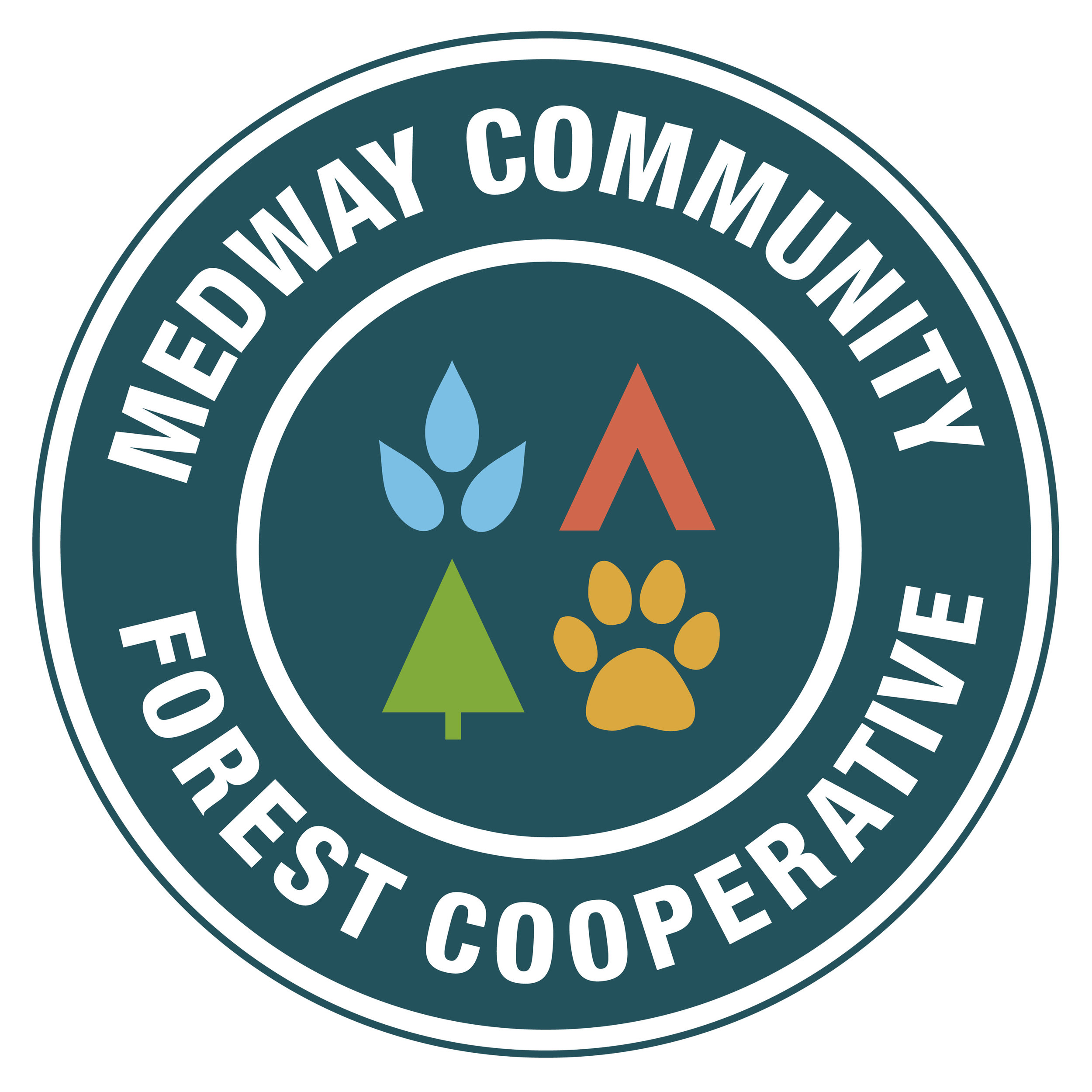Fall Newsletter 2020
Can you believe that 2021 is just around the corner? We hope you’re all keeping healthy and taking advantage of the nice fall weather by getting out on a trail and exploring the woods. Looking back on the year we’re grateful to have been able to continue working and developing new ways to engage with folks. The summer webinar series allowed for a wider audience to participate and can be accessed anytime on our YouTube page. We had a beautiful summer day to host our fourth annual Forest Market in Annapolis Royal and got to see many familiar faces and talented forest crafters, producers, and initiatives. New to our website under the Projects tab is a collection of short bio’s and contact information for this year’s market vendors – a great place to look for gift giving and wish lists!
Fall flowers on witch hazel (Hamamelis virginiana) - October 2020
Campground Consultation
Since our last update, we have secured a Letter of Authority with the Department of Lands and Forestry for the proposal to develop our backcountry style campground at Stave Lake. We hosted a Meet in the Woods Event to kick-off the campground consultation and are grateful to all who joined to share their thoughts and support. We are currently asking the public to review the campground proposal and submit any questions or comments before December 15th, 2020.
The full details are posted on the website where you can view the proposal and submit comments. There’s plenty of work to be done before these peaceful lakeside sites will be able to host campers under the stars, but it will be worth the effort to clean up some of the trees brought down by Hurricane Dorian. For anyone in the community who has a chainsaw, is certified, and eager to help out – reach out and we will keep it touch regarding a spring cleanup.
Our Meet in the Woods Campground Consultation at Stave Lake November 15th, 2020
Nova Scotia Working Woodlands Trust (NSWWT)
Coming soon - we are strategically planning and preparing to launch a pilot easement in 2021. This new land trust is being established to be the first legal holder of working-forest Community Easements in NS, with an aim to preserve the stewardship legacy of private woodlands for the benefit of the public. We are wrapping up the final details to achieve charitable registration and to be an eligible body under the Community Easement Act.
Are you concerned about the future of your woodlot? Our easement process will allow your woodlot to be protected from unsustainable logging in perpetuity by securing your stewardship legacy. NSWWT will exist to promote ecological forestry on private woodlands and ultimately help facilitate habitat continuity for species at risk on a landscape level. The Trust will work with talented and progressive forest management groups to ensure our properties are managed to reflect the natural ecology of the forest. If you are no longer able to care for your woodlot, NSWWT accepts donations of land that exemplify excellent forest management, rare ecosites or high conservation values.
To keep in the loop or to share woodlot property details you may be interest in securing with an easement – join for free as a member on our website www.nsworkingwoodlandstrust.org/become-a-member
Annual General Meeting
We gathered for our AGM online this year on October 19th, 2020. Going through various updates and advancements from over the last year as well as important updates from our new venture, the Nova Scotia Working Woodlands Trust (NSWWT). If you were unable to tune into the Zoom AGM in October, it is posted here on our YouTube page.
Hemlock Wooley Adelgid (HWA)
In partnership with the Canadian Forest Service (CFS), the community forest has developed a silvicultural research trial to study hemlock of high vigor and thin stands with a strong presence of hemlock trees in attempt to reduce the impacts of the invasive pest. The study sites take place on both crown and private lands in Queens, Annapolis, and Lunenburg county.
HWA is an aphid-like insect (aphids suck fluid from plants) that attacks and kills hemlock trees by feeding on nutrient and water storage cells at the base of needles, eventually killing the needles and buds, causing needle loss and stem dieback. They are active throughout the fall, winter, and spring, accumulating the wool that gives it its name. The wool protects the developing HWA, insulating it from cool winter temperatures and sheltering it from natural enemies, and ultimately creating an ovisac in which to lay eggs. More information and resources are available at www.nshemlock.ca.
Scouting out sites to set up new plots for our HWA silvicultural trial in partnership with the Canadian Forest Service (CFS) in the first good snowfall of 2020.



